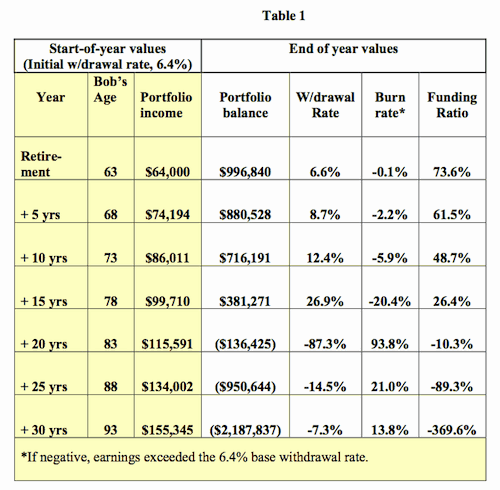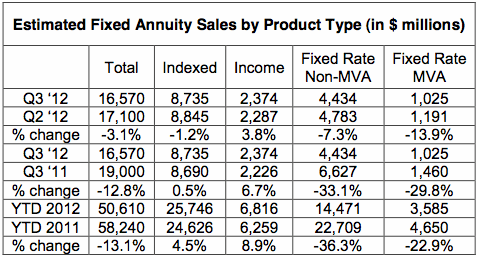Prudential buys $7.5 billion portion of Verizon pension obligations
Prudential Insurance Co. of America, a unit Prudential Financial, has announced that the Verizon Management Pension Plan has purchased a single premium group annuity contract from Prudential Insurance to settle approximately $7.5 billion of Verizon’s pension liabilities of the Plan.
Under the contract, Prudential Insurance has irrevocably assumed the obligation, beginning January 1, 2013, to make future annuity payments to approximately 41,000 members of the Verizon Management Pension Plan. Only retirees with fixed benefit payments who have been receiving payments since at least January 1, 2010 are affected.
Last Friday, U.S. District Court Judge Sidney Fitzwater in Texas rejected the November 27 request by two Verizon management retirees for a temporary restraining order and preliminary injunction blocking the transfer.
The two retirees said the move would strip them and approximately 41,000 other affected employees of their federal legal protections, such as pension guarantees through the Pension Benefit Guaranty Corp., and interfere with their rights under the retirement plan.
In his ruling, Judge Fitzwater wrote, “Verizon’s proffered legitimate, nondiscriminatory reasons for defining the group of retirees for the annuity contract… Verizon explains that it chose this group of retirees for the annuity contract because, inter alia, it simplified the contract to include only retirees with fixed benefit payments who had been receiving such payments since at least January 1, 2010.
“Limiting the annuity contract to these stable pension obligations also reduced the cost to Verizon by limiting the uncertainty that would arise if the annuity contract included pensions for participants not yet in pay status, or for recent payees who are more likely to challenge the calculation of pension benefits.”
A.M. Best reviews Phoenix Companies ratings
The Phoenix Companies’ financial strength (B+) and issuer credit ratings (bbb- and bb-) have been “placed under review with negative implications” by A.M. Best Co., the ratings agency said in a release.
The companies affected are Phoenix Life, PHL Variable Insurance, Phoenix Life and Annuity, and American Phoenix Life and Reassurance. The ratings are likely to remain under review pending the completion of the waiver process and the filing of the year-end 2012 Form 10-K.
Phoenix is seeking consent from its bondholders to waive the indenture’s requirement to furnish timely financials to the trustee on its 7.45% Quarterly Interest Bonds due 2032. A majority of the bondholders is required to extend the date on this requirement for the filing of third quarter 2012 financial statements.
Phoenix’s 7.45% Quarterly Interest Bonds, with approximately $253 million outstanding, are a retail issue sold in $25 increments. They currently trade near par. The under review status reflects A.M. Best’s concerns as to the uncertainty of achieving a successful outcome to the waiver process.
On November 8, Phoenix declared that it was postponing the release of its third quarter 2012 financial statements to restate its financial results. The company intends to file this report by the deadline for its 2012 Form 10-K, which is due by next March 18.
A. M. Best said it believes Phoenix has a “credible contingency strategy” in place if needed, but one that reduces its already limited financial flexibility. Its subsidiaries are profitable, but A. M. Best believes they will be hurt if Phoenix can’t obtain the necessary waiver.
Nationwide and Lincoln warn of need for LTC planning
A new Nationwide Financial-Harris Interactive survey of 501 financial advisors shows that 42% say their clients think of “Medicaid planning” as a way to protect their children’s inheritance from the potential cost of long-term care.
About half of Americans who need long-term care use Medicaid to pay for it, Nationwide said, in a release apparently intended to encourage the purchase of long-term care insurance instead of using Medicaid.
Besides the poor and those who have exhausted their assets, that number includes people who purposely shift assets to heirs to qualify for government coverage of their LTC expenses.
The Deficit Reduction Act of 2005 discourages transferring assets to children by implementing a five-year, look-back provision, instead of a three-year look back, but “Medicaid planning” is becoming a more often used tactic.
Disadvantages relying on Medicaid include:
- Medicaid recipients don’t always get to live where they wish. Nursing homes are not required to accept new Medicaid patients.
- Medicaid often uses nursing home care to the exclusion of assisted living, home health care or adult day care.
- Medicaid patients do not get private rooms and may have limited ability to upgrade.
- Healthy spouses may be deprived of resources if Medicaid planning is used.
In the survey, advisors said only 15% of their clients understand the potential costs of long-term care well; 35% say their clients understand the costs “not at all well.” At age 65, people have a 70% chance of eventually needing long-term care. in their lifetime. The average annual cost for a shared room in a nursing home is projected to be $265,000 by 2030, Nationwide said.
Separately, a panel of long-term care experts participating in a webcast sponsored by Lincoln Financial Distributors encouraged Americans to be “more proactive in their long-term care efforts and to partner with knowledgeable financial professionals to ensure customized programs that can help protect assets and prepare for retirement issues.”
The panel of industry professionals included Steve Schoonveld, head of Linked Benefit Products for Lincoln Financial Group; Melissa Spickler, senior vice president, wealth management advisor of Merrill Lynch; and, Dr. Stephen Holland, chief medical officer of Univita Health. Moderating the webcast was Andrew Bucklee, head of MoneyGuard Solutions Distribution for Lincoln Financial Distributors.
Great-West Financial launches ‘Retirement Income Control Panel’
Great-West Financial is expanding its suite of retirement readiness products and services for plan sponsors and participants, including “a real-time, personalized calculation of estimated retirement income based on the individual’s unique circumstances.”
The new tools include:
- The Retirement Income Control Panel provides a tailor-made retirement strategy for savings targets and gives each individual a custom income plan for spending down his or her retirement savings.
- 3(21) Fiduciary Services for new ERISA 401(k) plans provides plan sponsors and their advisors with co-fiduciary protection in the selection and monitoring of a plan’s investment options.
- Account Retirement Income Estimate on Physical Statements provides participants with an estimate of their monthly retirement income based on the accounts Great-West Financial record keeps for them.
- The Retirement Readiness Report Card for plan sponsors analyzes and reports on participants’ estimated retirement income levels versus participants’ target retirement income levels, then gives plan sponsors strategies for closing the gap (planned for the first quarter of 2013).
The Retirement Income Control Panel automatically draws real-time participant account data from Great-West Financial’s recordkeeping system. The panel also analyzes information an individual enters about assets outside of his or her Great-West Financial retirement plan. Industry expert Ibbotson Associates, Inc., part of the Morningstar Investment Management division, uses this custom data set to calculate the individual’s estimated monthly retirement income.
The Retirement Income Control Panel then compares the participant’s estimated retirement income with their target retirement income and highlights any gap between the estimated and target dollar amounts.
New York Life Retirement Plan Services to take new approach
New York Life Retirement Plan Services has gained substantial assets under administration over the past year, has appointed new client-facing executives, and has expanded further into providing executive benefits after successfully implementing a new business model initiated a year ago, the mutual insurer said in a release.
Since September of 2011, New York Life has made sales conversions and commitments of more than $5 billion, lifting total assets under administration to $43 billion and the number of participants served to nearly 1.2 million from 1.1 million.
Among the company’s new business wins for bundled retirement plan services is the $1.2 billion retirement plan of the IT company Fujitsu Management Services of America, Inc. Other new business wins include: the $1.7 billion retirement plans of a pharmacy distribution provider; a $700 million Midwest-based life and property & casualty insurer’s plan; the $140 million retirement plan of a financial holding company with a portfolio of 15 regional banks; and a $90 million Pipefitters Local union plan.
In addition, notable new business wins in the executive benefits and stable value markets include: a $5.5 million COLI-funding for a multi-national bank; a $1 million COLI-funding for a grocery chain; a $70 million stable value placement at a technology company; and a $17 million stable value placement at a private university.
Over the past 12 months, New York Life has also added substantially to its relationship management and sales staff. The company has hired seven additional relationship managers to support the following practices: Taft-Hartley; financial and professional services; manufacturing, materials, distribution and retail; and technology and communications.
In addition, New York Life has added four new sales directors to support the company’s heightened focus on sales in the Western and South Central regions, as well as in the executive benefits market space.
John Hancock Financial Network introduces iPad app for advisors
John Hancock Financial Network has introduced the “Retirement Ready” iPad app, an interactive tool designed to help financial professionals engage prospects and clients in an educational retirement income conversation.
The app, which is customizable to display the representative’s name and firm, includes information on the basic concepts of retirement income in distinct chapters, videos, exercises and interactive worksheets.
The content covers the client’s personal vision of retirement, the differences between the accumulation and distribution phases of life, detail on some of the key risks in retirement including longevity, market volatility and inflation, and creating a sustainable retirement income using a product allocation approach.
As with its original Retirement Ready microsite, JHFN worked with Blue Rush, a digital marketing firm, to develop the iPad app.
The Retirement Ready app is available now in the iTunes App store. General educational content will be available to the general public. The interactive tools will be accessible only to JHFN representatives.
Genworth Financial names president and CEO
Thomas J. McInerney has been named by Genworth Financial Inc. as the company’s president and CEO, effective January 1, 2013. He also will be elected to the Genworth board of directors. James S. Riepe will continue to serve as the company’s non-executive chairman.
Most recently, McInerney served as an advisor to The Boston Consulting Group. He previously held senior positions at both ING Groep and Aetna Financial Services. At ING, he was chief operating officer and a member of the Management Board for Insurance, responsible for the worldwide insurance and investment management businesses, encompassing some €425 billion of assets and 35,000 employees. He also served as CEO of ING Americas, overseeing insurance, pension, and investment management businesses in the United States, Canada, and Latin America.
McInerney graduated with honors from Colgate University in 1978 with a BA in Economics and received an MBA with a concentration in Finance and Investments from the Tuck School of Business at Dartmouth in 1982.
Lincoln Retirement names two sales directors
John McKeehan and Reed Steinmann have joined Lincoln Financial Group’s Retirement Plan Services as sales directors for the Institutional Retirement Solutions Distribution (IRSD) team. The IRSD team sells Lincoln’s full service retirement plan services to corporate and nonprofit/tax exempt plan sponsors.
McKeehan and Steinmann report to Michael Hall, IRSD National Sales Director. McKeehan supports the Southwestern region of the country and Steinmann covers the Midwestern region.
Prior to joining Lincoln, McKeehan was Regional 401(k) Director at Putnam Investments. He has served in retirement plan services roles with National Retirement Partners, Monarch Capital Management, Smith Barney and Morgan Stanley. McKeehan attended the University of Southern California and the Wharton School of Business. He also holds FINRA Series 63, 65, 7, 9 and 10 licenses. McKeehan is based in Orange County, California.
Steinmann comes to Lincoln from DWS Investments where he was a retirement consultant specializing in defined contribution and investment only solutions. He was also a financial advisor at Ameriprise Financial. Steinmann has a bachelor’s degree in economics from the University of Illinois, Urbana/Champaign. He also holds FINRA series 3, 7 and 66 licenses and has a Chartered Retirement Plans Specialist designation. Steinmann is based in Elgin, Illinois.
Cogent Research: Plan Participants ask for ‘auto features’
Americans participating in 401(k) and 403(b) plans want more support from their employers in reaching their retirement goals, according to “The Participant’s Retirement Plan,” a new report from Cogent Research.
The report is based on a survey of nearly 5,000 plan participants in the U.S. Americans participating in employer-sponsored retirement plans.
According to Cogent Research, 49% of plan participants across all plan sizes want a feature that automatically raises the contribution percentage by a specified amount each year. Only 18% of participants say they currently use such a feature.
Only 13% of the smallest employers are offering the feature to their plan participants, but 53% of employees of small business say they want access to it, the study showed.
Nearly half of all employers with 1,000+ employees say they offer contribution auto-increase, a number that matches interest levels among their employees (51%). However, only 19% of Americans tied to plans offered by large employers say they are currently enrolled in such a program.
“For small employers, the issue is a lack of access to this feature. However, for larger employers, the issue is more a lack of awareness that this feature is in place to help them,” said Christy White, principal of Cogent Research.




 Instead of helping jump-start the economy, they say, that low rate policy is keeping unemployment rates high by keeping real wages high. And if executives truly expected higher inflation, which would lower real wages and boost prices, they’d feel more confident about hiring.
Instead of helping jump-start the economy, they say, that low rate policy is keeping unemployment rates high by keeping real wages high. And if executives truly expected higher inflation, which would lower real wages and boost prices, they’d feel more confident about hiring.




 my image artificially “aged.”
my image artificially “aged.”  The concept isn’t necessarily bad. When handled with taste, it can even be moving. Lincoln Financial Group’s “Future Self” TV commercials were done well. One of the spots took place in a hospital, another in an airplane. Someone gets advice about saving for the future from a dignified elderly person who cryptically identifies him or herself as “you, only older,”
The concept isn’t necessarily bad. When handled with taste, it can even be moving. Lincoln Financial Group’s “Future Self” TV commercials were done well. One of the spots took place in a hospital, another in an airplane. Someone gets advice about saving for the future from a dignified elderly person who cryptically identifies him or herself as “you, only older,” 

